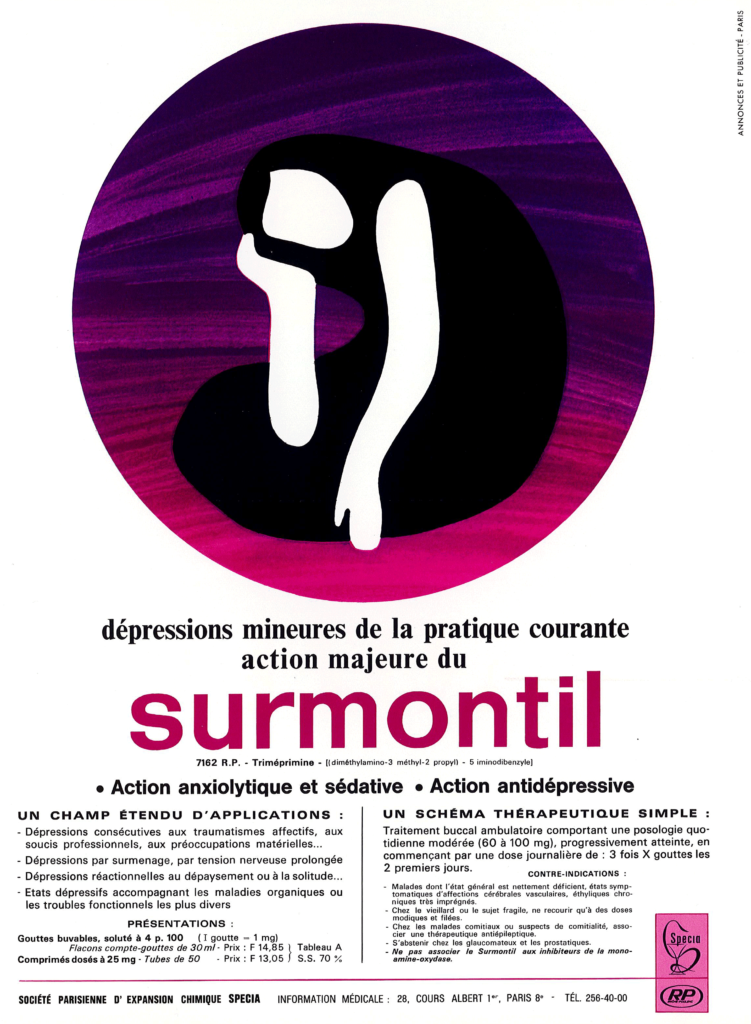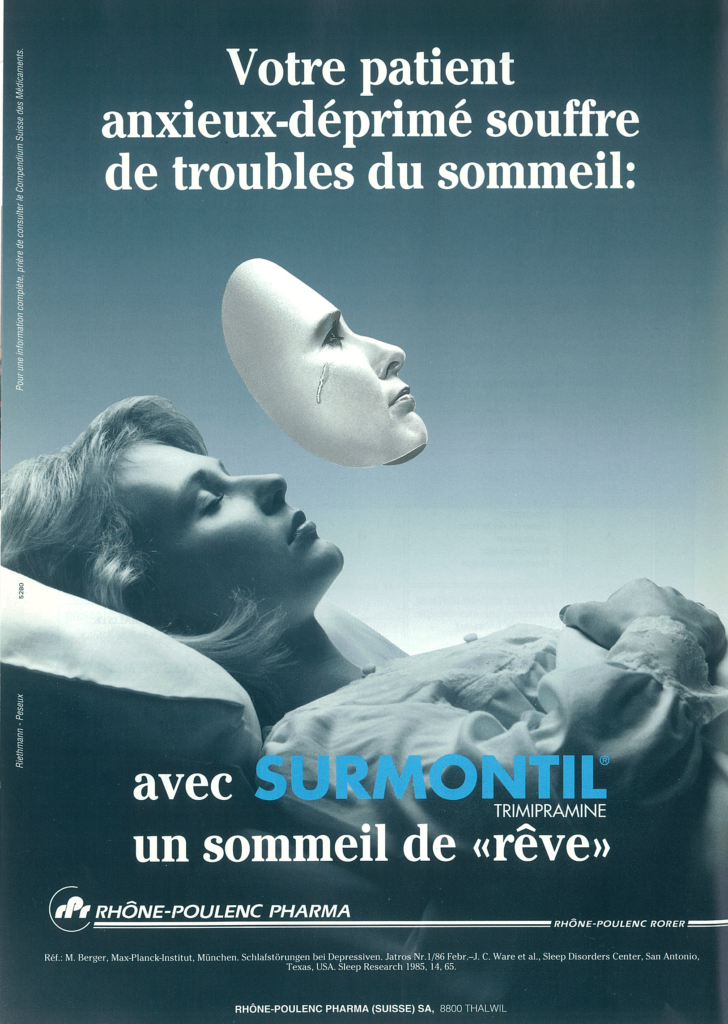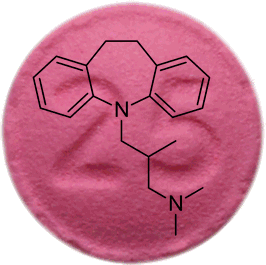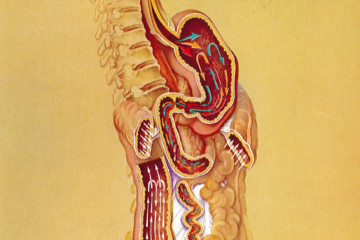The active principle of Surmontil is trimipramine, a classical tricyclic antidepressant product used since the early 1970s. It functions as a neurotransmitter reuptake antagonist, decreasing the reuptake of norepinephrine, dopamine and serotonin (5-HT), and thus increasing levels of these neurotransmitters. Chemically, trimipramine incorporates an imipramine nucleus and levomepromazine side chain. It is considered an adrenergic uptake inhibitor similar to imipramine but with more antihistaminic and sedative properties. The anxiety-reducing sedative component of its action was well appreciated for the treatment of depression, but also to treat primary insomnia and nocturnal enuresis. Like other tricyclic antidepressants, trimipramine can accumulate in the brain. The parent compounds and its main metabolites (such as desmethyl-trimipramine, trimipramine-N-oxide) can contribute to the antidepressant action via inhibition of the neurotransmitters.



The major neurobiological effect of trimipramine is the inhibition of the hypothalamic-pituitary-adrenocortical (HPA) system, which is often overactive in some subtypes of depression (such as delusional depression and other minor depressions). Among tricyclic antidepressants, trimipramine was one of the best compounds to improve sleep. The compound was generally well tolerated and often induced minor side effects, such as dry mouth, sedation, sweating, increased appetite, constipation, tremor, and vertigo. Its cardiotoxicity was less than that of most other tricyclic antidepressants.




